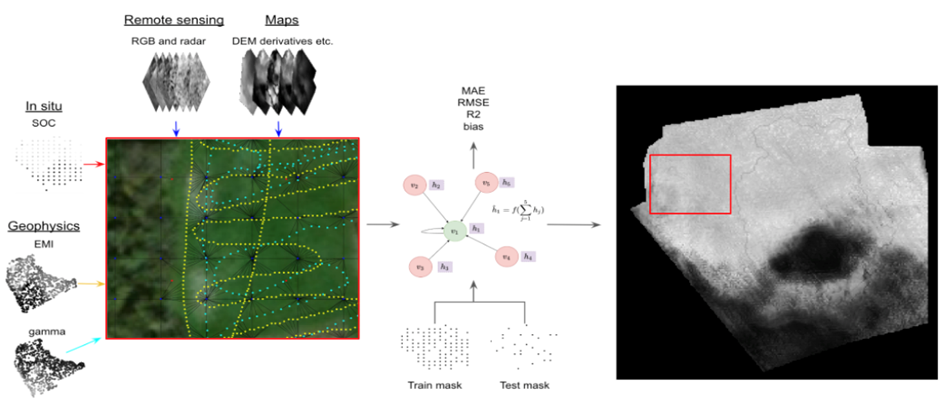Contributers: AAU, AU and I•GIS
In this work package, we leverage cutting-edge Deep Neural Networks in combination with multi-source, multi-modal data to exceed the capabilities of more conventional machine learning techniques. Currently, we are developing and refining state-of-the-art approaches with basis in ideas from Transformers, Graph Neural Networks and Probabilistic Neural Networks. The expectation is that the predictive maps generated using these methods will outperform maps created by more classical Neural Networks and established soil mapping methods. As our predictive maps will inform critical decision-making processes, we consider uncertainty and explainability a priority. For this reason, we are comparing a handful of different methods for estimate uncertainty quantification and model explainability.
Due to the differences in data availability at national and field scale we are currently operating with some differences in the Deep Learning method choices between our local and national models. In the last part of the project period, we will attempt to harmonize the local and national approaches, aiming to integrate the most effective Deep Learning methods across scales. The result should be a unified framework for soil modeling that encapsulates both the local intricacies and the broader national trends, without sacrificing prediction accuracy, uncertainty quantification, or model explainability.
Work package lead: Mark Philip Philipsen, AAU.
